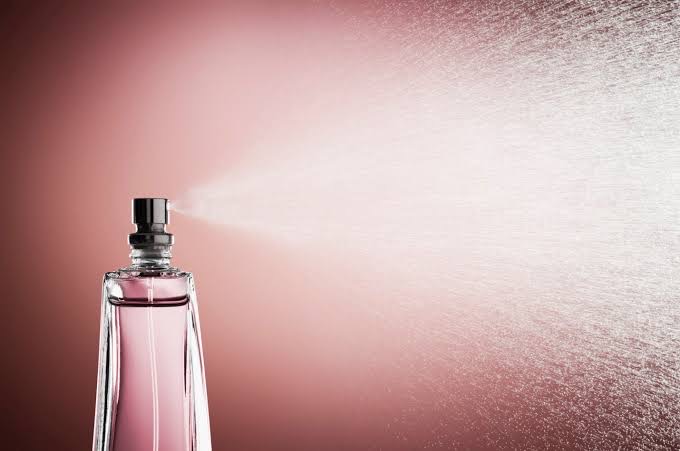
SYNTHETIC FRAGRANCES, THE NEW SECOND HAND SMOKE !!!
We all want to make a great first impression. Part of our human conditioning is to look and smell pleasant in the hope that people (for no particular reason) will instantaneously like and be attracted to us.
Prior to daily bathing being commonplace, royalty and the rich doused themselves in bespoke concoctions primarily made of distilled pure essential oils designed to mask any obscene odours and to make them more desirable.
These days, fragrances are ubiquitous and dare I say, somewhat subjective. We are living in an era of sensory overload with many people still unaware of the imminent dangers of synthetic fragrances. They’re found in almost all cosmetics and personal care products (as well as household cleaning goods, laundry detergents and fabric softeners). They’re frequently used in just about everything to make it smell fresh, clean, pleasant, fragrant and well let’s face it, fake.
WHAT’S IN A SMELL
The term “fragrance” or “parfum” on a cosmetic ingredient list represents a complex mixture of dozens of chemicals with anywhere as many as 3,000 constituents being used as fragrances. Fragrance is an obvious ingredient in perfumes, colognes, and deodorants, but it’s even used in products marketed as “fragrance-free” or “unscented”.
You may find this fact hard to believe but, of the thousands of chemicals used in fragrances, most have not been tested for toxicity, alone or in combination. You see, fragrance formulations and their constituents are protected under the guise of the Trade Secrets Act so manufacturers are not required to disclose these unlisted ingredients with many being known irritants that can trigger allergies, migraines, and asthma symptoms.
People with multiple chemical sensitivities (MCS) or environmentally linked illnesses are particularly vulnerable, with fragrances implicated both in development of the condition and triggering symptoms.
WHAT THE SCIENCE SAYS
In laboratory experiments, individual fragrance ingredients have been associated with cancer and neurotoxicity among other adverse health effects. Almost anyone might experience skin irritation or runny eyes and nose with researchers reporting that “perfume” is the second most common cause of allergy in patients at dermatology clinics.
Synthetic musks commonly used in fragrances are of concern from an ecological perspective and several musk compounds are persistent in the environment and bioaccumulate in the fatty tissue of aquatic organisms. Certain synthetic musks (moskene) have been flagged for future assessment. Of interest, the European Union (a little more progressive than Australia and the USA) restricts the use of many fragrance ingredients, including two common musks (nitro musks) and requires warning labels on products if they contain any of 26 allergens commonly used as cosmetic fragrances.
STICK IT TO YOU
Some fragrance ingredients are not perfuming agents themselves but enhance the performance of perfuming agents. The smell that lingers long after someone has long departed the room or the smell that adheres to your skin or your clothing is due to diethyl phthalate or DEP. We are well versed on its cousin – Bisphenol A or BPA, an endocrine disrupting chemical (EDC) which has now been removed from a wide variety of plastic products.
- Phthalates have been linked to early puberty in girls, reduced sperm count in men, and reproductive defects in the developing male foetus. Phthalate metabolites are also associated with obesity and insulin resistance in men. Exposure to phthalates may cause liver and kidney failure in young children when products containing phthalates are sucked or chewed for extended periods. DEP is listed as a Priority and Toxic Pollutant based on evidence that it can be toxic to wildlife and the environment. Phthalates in children’s toys (including DEP) have now been banned, but the use of DEP in cosmetics remains unrestricted.
- Parabens a commonly used synthetic preservative in many fragrances can interfere with the production and release of hormones.
- Synthetic Musks, studies have shown that several types of synthetic musks not only disrupt hormones, but traces have been found in: fat tissue, breast milk, body fat, and umbilical cord blood.
In recent years’ laboratory analysis of top-selling perfumes and colognes identified an average of 14 chemicals per product not listed on the label, including multiple chemicals that can trigger allergic reactions or interfere with hormone function.
Most of us assume that anything we apply topically stays put, but the scary fact is that anything that has a molecular weight below 500 Dalton, can seep right into your bloodstream. If a product has a strong smell, it’s highly likely it’s chocked full of fragrance components like EDC’s and chemicals that do damage to your cells.
If an ingredient is volatile enough to emit an aroma, you get a double dose of molecules entering into your system through inhaling them as well as through your skin. The exception to these is if the aroma is derived from an essential oil. The body can utilise and assimilate fragrant natural plant compounds and eliminate them.



